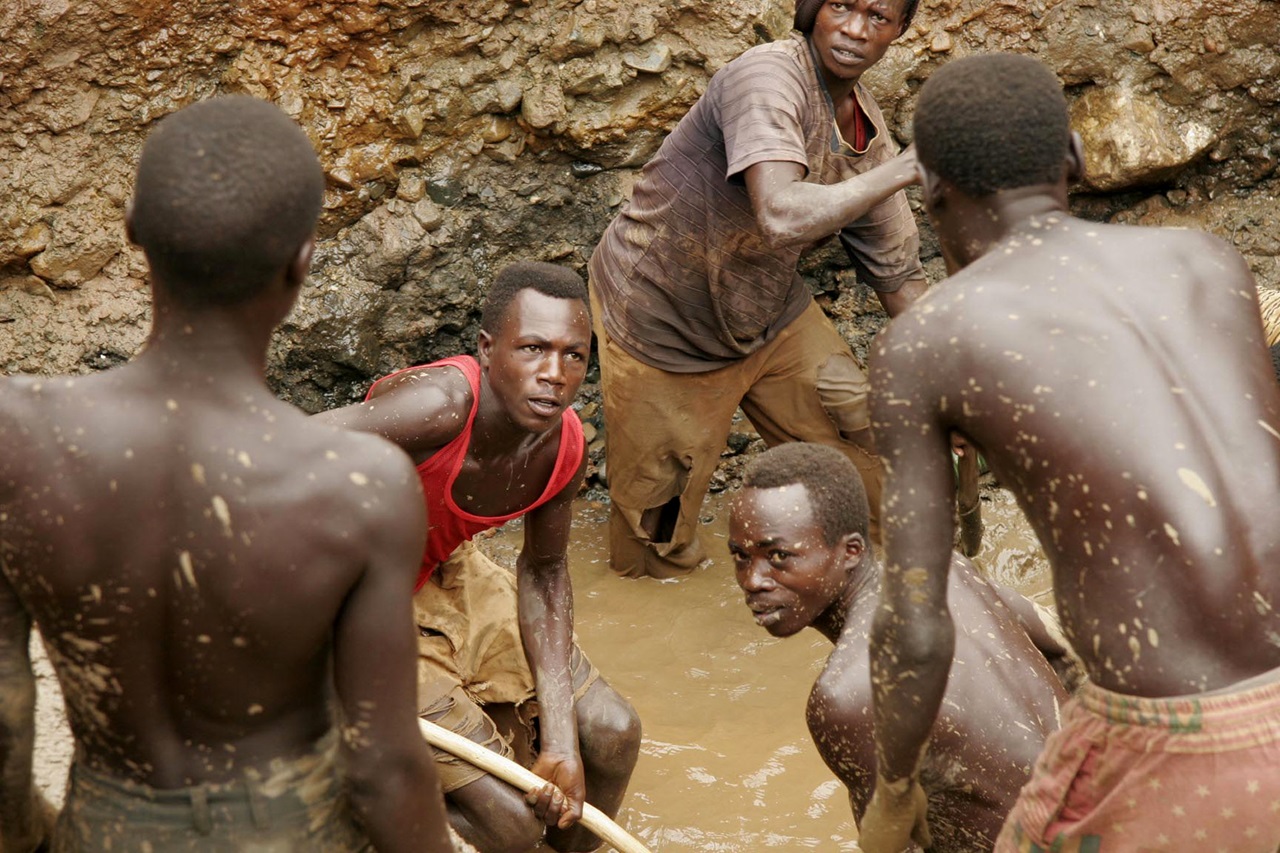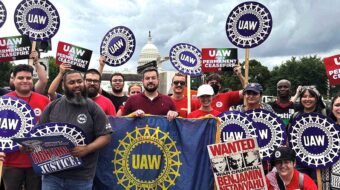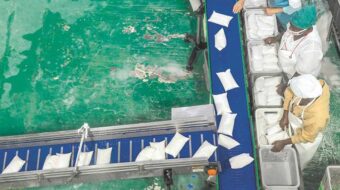
The United States Institute of Peace on Feb. 27 awarded its “Women Building Peace” award to Pétronille Vaweka. She’s a local official in the Democratic Republic of Congo’s (DRC) Ituri region, known as a peacemaker who’s negotiated ceasefires with powerful militias and saved numerous child soldiers from forced combat.
Receiving the honor, she responded: “I weep because at this moment, in…Goma, women and children are dying… [and] thousands of families are forced from their villages.” Goma, population two million, is the capital of North Kivu province in the DRC. Despite being hailed for the actions she’s taken for peace, Vaweka knows that the fighting isn’t over.
Guardian columnist Owen Jones has called the DRC “the site of the deadliest war since the fall of Adolf Hitler,” but it is a war, he says, of which most people in the West are totally unaware.
Diminished U.S. and European press coverage of the region’s humanitarian crisis has contributed to massive ongoing human suffering as, unwatched, lethal violence has enabled the wholesale stealing of the region’s natural resource riches.
One million refugees entered eastern DRC from neighboring Rwanda during and after that country’s genocide in 1994. By early 2023, one million newly displaced people had arrived in the Goma region. Within months, there would be half-a-million more.
Of the 7.1 million displaced persons in the region now, 97% were displaced due to violent attacks by non-state military forces. The 1.1 million children and 605,000 women who are malnourished exemplify the suffering there.
The U.N. Refugee Agency describes “targeted attacks against civilians” with “killings, kidnappings, and the burning of homes.” The International Organization for Migration reports that “violence and brutal attacks… loss of life, mass displacement, and increasing instability” are devastating and that “[a]cross the country, over 26 million people need humanitarian aid.”
War in the eastern DRC has killed six million people over 30 years, according to reporter James Rupert. He indicates that, “More than 250 local and 14 foreign armed groups are fighting for territory, mines, or other resources in the DRC’s five easternmost provinces.” Troops from Uganda, Rwanda, and Burundi are present. A United Nations peacekeeping contingent will be leaving soon.
The March 23 Movement (M23), formerly troops of the DRC army, figures prominently in the turmoil. This irregular military force, allegedly controlled by Rwanda, occupied Goma in late 2012 and was soon ejected by DRC and U.N. forces. Having broadened their operations after 2022, M23 detachments regularly execute civilians and force boys and men into their ranks.
U.S. press coverage of this brutal war remains skimpy, and the U.S. public is largely uninformed. The media also steers clear of humanitarian crises associated with war in Sudan and displacement of the Rohingya people from Myanmar, in both instances perhaps because U.S. vital interests are not at risk.
The U.S. approach toward Sudan apparently is one of watchful waiting, despite reports of supposedly growing Russian and Chinese influence and of combatants allying with extremists.
Israel’s war against Palestinians and the humanitarian catastrophe in Gaza are different. There, the U.S. government and weapons manufacturers are unreservedly involved, and the media and public pay close attention.
Maybe there’s a correlation. As long as war, social catastrophe, and U.S. self-interest play out together, the U.S. public is informed. Drop the U.S. involvement, and they are not.
If that’s a rule, troubles in eastern DRC are an exception. U.S. powerbrokers are strongly attracted to the region, but even so, the U.S. public remains oblivious to the situation. James Rupert explains:
“The DRC is a treasury of minerals…including an estimated 70% of the world’s known cobalt, a vital component of lithium-ion batteries for electric vehicles and other green energy products.… Since 2020, the U.S. Energy and Interior Departments have maintained a list of minerals, currently 50 of them, that they judge vital to America’s economy, energy grid, or national defense.
“Many are difficult to access through reliable supply chains, and many, including cobalt, copper, lithium, tantalum, tin, and titanium, are mined in the DRC, often from illegal mines controlled by armed groups and smugglers, or in industrial mining that is significantly dominated by China.”

Rupert describes U.S. initiatives aimed at promoting mining in Africa, for example, securing investments for “building a $2.3 billion railroad to carry copper and cobalt from Congo and Zambia to Angola’s seaport of Lobito.”
He blames the multitude of “industrial and artisanal mines” in the DRC for human suffering. Paramilitary groups provide security and “hundreds of thousands…who are effectively enslaved” do the work. Importantly, there are the more than 260 armed groups that Rupert says are fighting over territory, mines, and resources.
Despite such turmoil, the U.S. government is looking on the DRC as a land of opportunity for natural resource corporations. With its cheery message of March 14, 2024, the International Trade Administration of the U.S. Department of Commerce wins points for salesmanship:
“The DRC offers opportunities large and small. The DRC’s vast mining wealth attracts top mining companies from around the world… [and] is home to globally significant deposits of hard-rock lithium…. Energy is another sector with huge potential for renewable energy, including hydropower and solar. The country has the potential to generate over 100,000 MW of hydropower, which is more than half of Africa’s total hydropower potential.”
Continuing: “Oil and gas discoveries in the east of the country give the DRC the second largest crude oil reserves in Central and Southern Africa…. The DRC has the highest agricultural potential in Africa…[and] the potential to feed over 2 billion people with appropriate investment.… There are many infrastructure construction opportunities for U.S. companies, with most projects structured as public-private partnerships.”
This U.S. presentation of opportunities for extraction and expropriation of resources does not explain how to pursue them. A promotion piece, it is far removed from Pétronille Vaweka’s portrayal of, as she sees it, a system “based on brutal, illegal mining of these minerals from our soils and by people working in conditions of slavery.”
Wide dissemination of this grim news would likely shed light on the dark side of capitalism. The system’s much-vaunted “magic of the market” and its autonomous mode of operating would turn out to be proxies for a kind of anarchy that, built on greed, assures that anything goes. This is a kind of insight that, for those in charge, is best avoided.
To limit the flow of news on human suffering is offensive on other grounds. Doing so violates “the commons,” items such as water, oxygen in the atmosphere, and knowledge that, essential to human living, must be accessible to everyone. The restriction also hits at the revolutionary notion of human solidarity, the idea that someone else’s pain is ours too.
We hope you appreciated this article. At People’s World, we believe news and information should be free and accessible to all, but we need your help. Our journalism is free of corporate influence and paywalls because we are totally reader-supported. Only you, our readers and supporters, make this possible. If you enjoy reading People’s World and the stories we bring you, please support our work by donating or becoming a monthly sustainer today. Thank you!












Comments